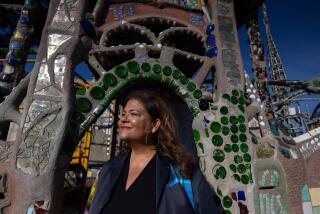Experiencing the Joys and Wonders of Museums
I was with Joyce the day she discovered the Rosetta stone. Oh, I know Napoleon’s troops discovered it first, in Egypt, in the sands of Rashid in 1799.
I’m talking about who discovered it best , and I was with her when it happened.
We were in the British Museum. One moment my wife was walking along, reading wall plaques, and the next she was standing wide-eyed, almost in shock, staring at it.
“Good Lord! Do you know what this is?” she asked, pointing. “I mean, do you really know?”
Before I could answer, she told me and several other people standing nearby. “This is the Rosetta stone. This is it, in person! This carved stone is what opened up the ancient world.
“This engraving right here made it possible for us . . . I mean, the scientists and historians . . . to read hieroglyphics, to learn the mysteries of ancient Egypt. See, carved here in three languages is the same message.”
As she went on, a few people gathered around. One of the museum guards, an East Indian woman who had been sitting on a chair against the wall, approached to listen, realizing belatedly that Joyce was touching the black basalt slab as she talked.
The woman’s frantic, “Oh, well, here, now, oh my goodness, missus!” brought my wife up short.
Not a Bit Sorry
Joyce’s apology was accepted immediately and she took a minor scolding with good grace and a look of sincere repentance, but she confided later that she wasn’t really the least bit sorry.
She said she was glad to have touched the Rosetta stone, and that it had a warmth to it she had not expected, as if it and its message were alive.
Ever since Joyce and I got our offspring educated and discovered that there could be such a thing as extra money, we’ve traveled. Since that time neither of us ever knowingly bypassed a museum. We tend to take some of the exhibits seriously.
Star of Africa
The same week we saw the Rosetta stone we visited the Tower of London, where Joyce took my arm and led me away from the Star of Africa, one of the crown jewels that seems to give back more light than it takes in. She said my continuing presence in front of the case, with my chin-on-the-chest look, was making the Beefeater guards nervous.
Pulling Joyce away from Amsterdam’s Rijksmuseum was like trying to get a child past a candy store.
And it was only the city guide’s threat to leave us in East Berlin that got the two of us out of the Pergamon and away from the reassembled walls of ancient Babylon.
Strangely enough, though, one of the most memorable museum experiences either of us has had came about because of something we knew should have been in the museum, but which we just couldn’t find.
On a sunny afternoon we went to the Sir John Soanes Museum in London. Like every one else who visits the Soanes, we were met at the door and welcomed by the curator.
Then we stepped into what felt like a different world, and definitely a different century--the house had been the home of Sir John Soanes, one of England’s foremost architects of the late 18th and early 19th centuries.
We were told that except for a few decorative ropes restricting certain areas, nothing was different from the time when the family was in residence.
Portrait of Old Man
We saw a picture of Sir John over the mantelpiece, painted when he was 75. We saw the William Hogarth paintings, plus the ornately carved white alabaster Sarcophagus of Seti I and dozens of other exhibits.
But the longer we stayed and the more we saw, the more aware we became that though it was indeed a remarkable museum, as a house something was missing. We were in a home in which a man had, reportedly, lived most of his life, but there seemed little or nothing of him in it.
Joyce mentioned this to one of the elderly guards in the basement.
“The man himself you mean, mum?” he asked. “I don’t know as I can help you. It’s 150 years since his passing, you know.”
“We saw the picture in the dining room,” Joyce said.
“Well, mum,” he said, leading us toward the museum’s picture room, “that’s an oil painting, but still much like a photograph, as you might say. Such pictures are only a few moments of posing out of a man’s life--in that case, a very old man’s life. Older even than meself.
“Sir John was born the son of a bricklayer, but because of his talent, was knighted. He designed the Bank of England, Holy Trinity in Marylebone and so many of England’s finest buildings.
“Historically, he was the leader of the classic revival of English architecture. A vital person was Sir John, not just an old man posing in a chair.”
When we arrived at the main picture room the guard began turning panels, displaying renderings of building after building, each seemingly more beautiful than the one before.
Some Structures Unbuilt
“This is some of Sir John, some of his works. They’re all over the country. But many of these you see here were never built. Too dear for the London of his day, but if they had been built, oh what a London this would be!”
“But do we know anything about the man himself?” Joyce asked, “or his family?”
“If it’s the humanity of the man, mum,” and he pointed through the window into the Monk’s Yard, which was really little more than an ornate light well in the center of the building.
It was dominated by a large monument inscribed, “Alas, Poor Fanny.”
“A child?”
The old man shook his head. “His wife’s dog. Elizabeth Soanes was given the dog when it was just a puppy by Sarah Siddons, the actress. Elizabeth loved it for years and when it eventually died, Sir John buried it in the Monk’s Yard and had the monument put up and inscribed.”
More people were coming in so I thanked the old man. He shook hands with both of us. Then, just as we started up the stairs to street level, he touched my arm and pointed toward a slab of white marble with an inscription affixed to a wall.
“Sir, mum, I think this may help answer your questions. When Elizabeth Soanes died, Sir John commissioned this in her memory:
In Memory of A Devoted Wife
Who Departed This Life on The
22nd Day of November 1815
--Epitaph by a Friend
I did not know thee in that happier hour,
When smiling youth up on that lap of life,
Sprinkles her gayest flowers. It was not mine
To catch the early sparkle of thine eyes,
Or list the playful wit of youthful hours.
Dew drops that gem the rosy bands of hope,
And love and joy with graces all their own,
Yet, O how much remained to tell the past,
How rich an harvest showed what spring had been!
Lamented friend, thou hadst indeed a heart
Illumed with virtues, whose transcendent blaze,
Like the bright comet, seldom seen, nor long;
But once beheld, can be forgot no more.
There is one, whose stricken heart,
Whose downward bending eye,
Best tell thy goodness, best proclaim his loss,
For he hath climbed the steeps of life with thee,
Repos’d in myrtle bowers, gained fortune’s smile,
Inhaled the noblest breath of fame and felt
That all were sweet, for all were shared with thee.
Eternal Father, Thou whence all proceeds
Of woe or joy that marks this mingled state
Of transient being, look in mercy down,
To sooth and heal his lacerated heart
And through the weary lapse of lingering time
Support him til that welcome hour arrive
Which grants reunion in a better world.
Joyce reached out and ran her fingers over the plastic that covered the marble.
“Were they married long?”
The old guard told how John Soanes had wed Elizabeth Smith in 1784, how they’d been married for 31 years, spending all their lives together in the one house.
John and Elizabeth had five children, but only two had survived.
“And, as the story goes,” said the guard, “both of them went the way of ‘The Rake’s Progress,’ became wastrels as young men, spending their time on cards and wine and women.”
Question of Love
The old man paused for a moment, as if considering whether to say more, then addressed Joyce. “Was there love in the marriage, you might ask. I’ve asked meself that a time or two. When they were wed, Elizabeth was the niece of George Wyatt, a wealthy builder, which would certainly not have hurt the career of a young architect.” He smiled, shrugged and started to move toward the other visitors.
“Sir?” she said.
He paused, waiting for her question.
“Sir, what do you think? Was there love?”
He was quiet for a few seconds before he smiled and nodded.
We stood across the street and looked back at the Soanes Museum.
“I believe he’s right. I think there was probably a great deal of love in this house,” Joyce said.
“Why?”
“Thirty-one years, five children, the poem on the stone and . . . because I want to believe it.”
I suspect she’s right.
More to Read
Sign up for The Wild
We’ll help you find the best places to hike, bike and run, as well as the perfect silent spots for meditation and yoga.
You may occasionally receive promotional content from the Los Angeles Times.






